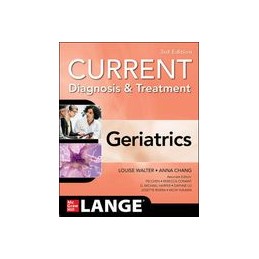- Reduced price

Order to parcel locker

easy pay


 Delivery policy
Delivery policy
Choose Paczkomat Inpost, Orlen Paczka, DHL, DPD or Poczta Polska. Click for more details
 Security policy
Security policy
Pay with a quick bank transfer, payment card or cash on delivery. Click for more details
 Return policy
Return policy
If you are a consumer, you can return the goods within 14 days. Click for more details
The definitive guide to safe, effective care of older adults—updated with important new content and streamlined for quick access
A Doodys Core Title for 2024 & 2023!
Data sheet
Table of Contents
Section1. Principles of Geriatric Assessment and Care
Reference: 14402
Author: Gianni Francesetti
Od psychopatologii do estetyki kontaktu
